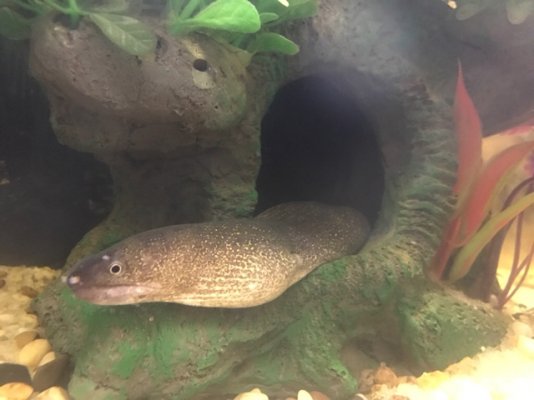BenjiLew
Aquarium Advice Apprentice
- Joined
- Mar 11, 2017
- Messages
- 22
My first time on here.
I have done several aquariums all freshwater and mostly tropical.
The most recent one is for my mom.
I visit a few times a week to make sure the fish are cared for because she is elderly and I honestly can't trust her to remember.
I put together a 55 gal panoramic tropical tank.
However I live in Israel now and I wasn't very familiar with the fish available here for pets.
(I am from the Texas)
Almost all available fish here are aggressive species.
So I had a challenge choosing fish.
A marine biologist I spoke to gave me some ideas.
I now have this in my population count:
1 fire eel
1 freshwater snowflake moray
1 baby Oscar
1 blood parrot cichlid
2 gouramis
2 blue/gray cichlids
2 rainbow? Cichlids
5 tiger barbs
1 unknown cichlid
I have never had cichlids before so this is new to me and I am not 100% I have them identified correctly.
If you know better please tell me.
Here is what I want to do based on what I was told could be done:
I want to set up an ecosystem where there are many guppies or mollies that breed so frequently that the larger more aggressive fish will have a steady supply of fry or small fish to eat to keep any aggression down.
I need to know what kind of fish would be suitable, how many, and what will be needed to ensure they are not all eaten so their population will be able to be sustained.
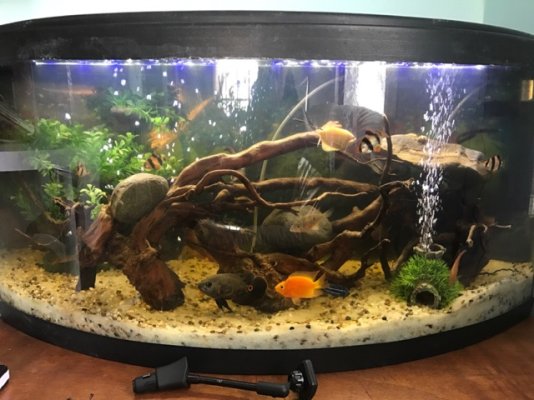
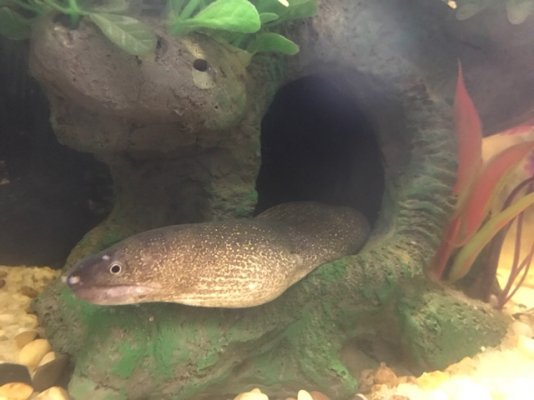
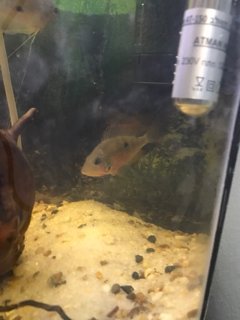
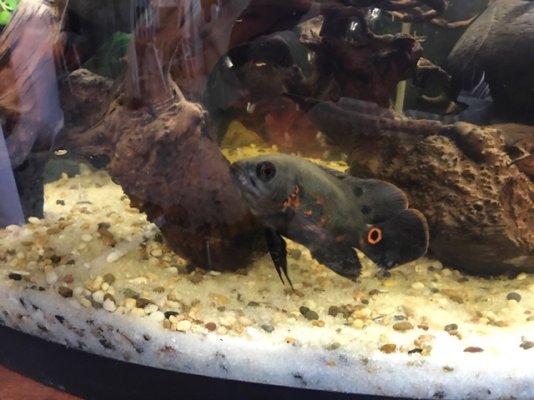
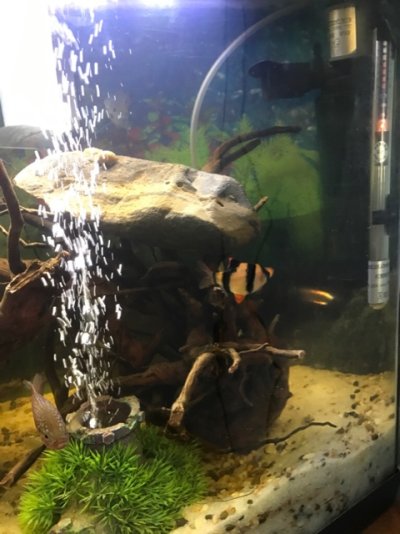
I have done several aquariums all freshwater and mostly tropical.
The most recent one is for my mom.
I visit a few times a week to make sure the fish are cared for because she is elderly and I honestly can't trust her to remember.
I put together a 55 gal panoramic tropical tank.
However I live in Israel now and I wasn't very familiar with the fish available here for pets.
(I am from the Texas)
Almost all available fish here are aggressive species.
So I had a challenge choosing fish.
A marine biologist I spoke to gave me some ideas.
I now have this in my population count:
1 fire eel
1 freshwater snowflake moray
1 baby Oscar
1 blood parrot cichlid
2 gouramis
2 blue/gray cichlids
2 rainbow? Cichlids
5 tiger barbs
1 unknown cichlid
I have never had cichlids before so this is new to me and I am not 100% I have them identified correctly.
If you know better please tell me.
Here is what I want to do based on what I was told could be done:
I want to set up an ecosystem where there are many guppies or mollies that breed so frequently that the larger more aggressive fish will have a steady supply of fry or small fish to eat to keep any aggression down.
I need to know what kind of fish would be suitable, how many, and what will be needed to ensure they are not all eaten so their population will be able to be sustained.






